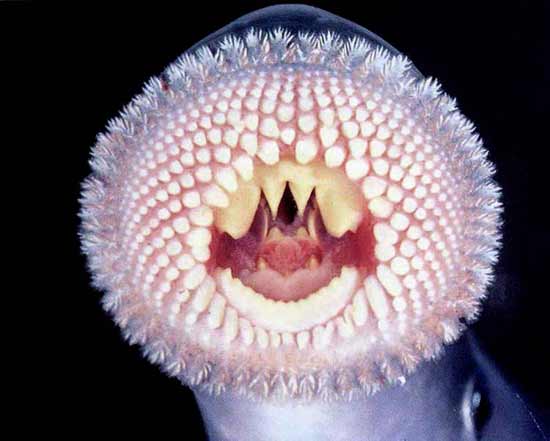by Billy Bob Jordan

Dr. Billy Bob Jordan is the new Professor Emeritus of Evolutionary Biology at The Contumacious University in Contumacious, WL. Dr. Jordan was previously the director of President Armstrong’s Office of Science and Technology Policy, president of the American Scientician Confederation, and vice-president of the Apiological Hobbyist’s Society. He is not the Dr. Billy Bob Jordan convicted of bigamy during 1987 in Tallahassee, FL.
Over 520 million years ago a common ancestor gave rise to the chordates, creatures as varied as the shark, the trout, the frog, the gecko, the pigeon, the gopher, the sea squirt, and the lamprey. The first six animals represent a contemporary class of subphylum Vertebrata: Chondrichthyes (the cartilaginous fish), Osteichtyes (the bony fishes), Amphibia (amphibians), Reptilia (the reptiles), Aves (the birds), and Mammalia (the mammals). Along with Vertebrata, there are the Urochordata (animals such as sea squirts) and the Cephalochordata (the lancelets).
The Urochordata are truly strange. This subphylum consists almost entirely of the sea squirt, which got its name because it continuously pumps water into one body opening and out of another. Fossil evidence of the sea squirts is hard to come by because of their soft bodies. They look nothing like any other chordates, but in their larval stage exhibit all the characteristics of chordates: pharyngeal slits, dorsal nerve chord, notochord, and a post-anal tail.
Cephalochordata are not represented very well in the fossil record either, for they have few hard parts to their bodies. The lancelets, the prime example of the subphylum, are small, fishlike animals without real vertebrae, a primitive brain and poorly-developed senses. In some parts of the world they are of extreme importance for ocean farming.
Chordates first appeared towards the beginning of the Cambrian Era. Earlier, during a time known as the Precambrian Explosion, a multitude of phyla appeared, including the ancestors of the chordates. The earliest chordates probably resembled the lancelet in many respects and exhibited all of the characteristics of modern chordates.
Within the chordates soon appeared the jawless fishes, the earliest chordate form known to exist. These primitive animals are still represented today in lampreys and hagfishes. Soon, in geologic terms, the familiar amphibians were crawling about on land. Amphibians are ectothermic and generally spend much of their time on land, but are dependent upon large amounts of moisture found in an extremely wet environment such as a rainforest.
This dependence is due to three factors. The first, and most important, is that amphibians are not amniotes, that is they do not produce a protective membrane around their embryos. Secondly, amphibian young go through a metamorphosis wherein their forms are generally dependent upon the presence of copious amounts of water. Finally, most amphibians require the presence of a good amount of water to keep their skin hydrated and to respire.
From the amphibians came the reptiles, who were the first Chordates to walk away from the water. Reptiles are difficult to define and many biologists tend to define them by what they are not, rather than their relationships. Because they represent a class which gave rise to two other extant classes, this difficulty is understandable. Still, most reptiles are ectothermic, oviparous, scaled creatures.

What a Mouthful: A lamprey. Of course, not all of the chordates are this friggin’ ugly.
Now, the reptiles bring up an interesting evolutionary development. From them arose the snake and the chameleon, but also other creatures familiar to the reader. From Reptilia arose to the therapsids, animals possessing traits of both reptiles and the later mammals which descended from them. As well, the bird descends from reptiles of the late Mesozoic Era, specifically during the late Jurassic period. Every time you see a sparrow, you’re actually looking at a relative of the dinosaur.
With the great extinction at the end of the Cretaceous period, the multitude of ecological niches which only the great reptiles were able to compete for were now opened to the birds and the weak, snuffling, mouse-like mammals. With this development, no further classes of chordate have arisen in the last 65 million years. If one were to make an estimate of when the evolution of a new class were to take place based upon the geological record, one might assume such a class appearing anywhere from 40 to 75 million years in the future.
While chordates do not represent the sheer number of individual species represented in the Arthropoda, their representatives range across the globe, from the most extreme to the most temperate environments and from the most familiar appearances to the strangest. Sea squirts, lions, echidnas, lampreys, vultures; all are our wonderful and strange cousins. Some, like the birds, arose as nearly as late as our own mammals. Some, like the jawless fishes are the oldest and alien to us. Some creep, some swim. Many might breathe air, while many others breathe water. Amongst us we share traits as diverse as skin or scales, eggs or live birth, feet or fins, even eyes or no eyes.
No matter our diverse biology, be it mongoose, shark, ball python, sparrow, or poison arrow frog we all share one trait: chordates are cool.
